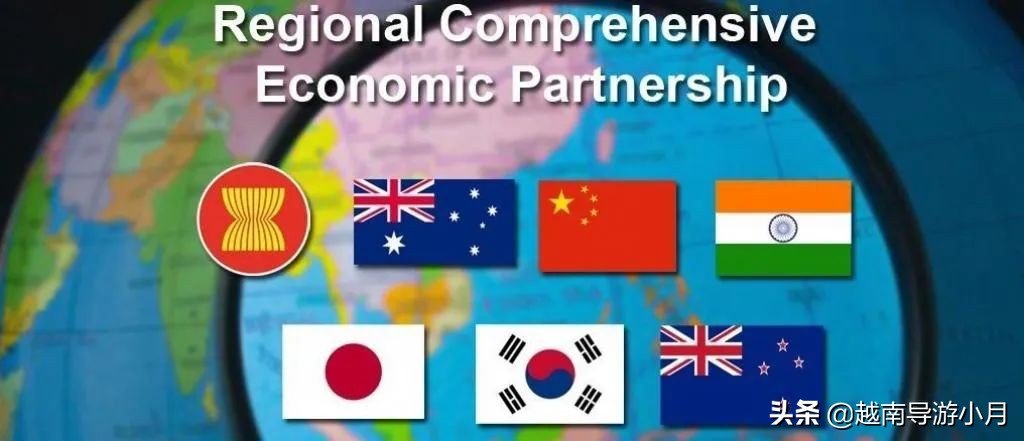Recently, the ASEAN Internal Trade Negotiation Committee held a meeting on the regional comprehensive economic partnership agreement. In fact, this is regarded as a preparatory meeting for the 37th ASEAN Summit to be held from November 12 to 15. The “Regional Comprehensive Economic Partnership Agreement” (RCEP) summit, which China, Japan, South Korea and ASEAN and other countries are expected to achieve, will be held in the form of a video conference on the 15th of this month. All parties are expected to reach a basic consensus on an economic cooperation agreement.
For ASEAN, especially for Vietnam, RCEP will support them to expand comprehensive trade and investment and expand the market. RCEP helps consolidate and maintain the production and supply chains in Vietnam and ASEAN, especially strengthening the economic recovery after the new crown epidemic.
RCEP is the largest free trade agreement in the world and is expected to provide new opportunities for enterprises in ASEAN countries including Vietnam. China, Japan, South Korea and ASEAN countries are still waiting for India to consider whether to rejoin RCEP.
RCEP member states have previously confirmed the goal of completing the RCEP signing this year to promote the multilateral trading system, trade liberalization, and economic recovery after the epidemic.
Joining ASEAN is the first step that Vietnam has taken to join the world economy. After 25 years of development, Vietnam has moved from a country with slow development and a per capita income of only US$300 in 1995 to the goal of a per capita income of US$3,000.
Vietnamese experts assessed that the ASEAN market is not as “rigorous” as other developed countries such as the United States, the European Union and Northeast Asia. ASEAN countries can complement each other’s strengths and weaknesses, which is very suitable for the competitiveness of Vietnamese enterprises.
In addition, with the entry into force of the EU-Vietnam Free Trade Agreement in August, Vietnam has become a trade hub between ASEAN and the EU.
In terms of trade, the free trade agreement between Vietnam and ASEAN countries began the process of reducing tariffs in 2010. The ASEAN Trade Agreement is the largest and fastest reduction in tariffs among all the trade agreements that Vietnam has joined. The process of tariff reduction in Vietnam was completed in 2018, and the tariff reduction in the ASEAN region has covered 98.6%.
ASEAN has been regarded as an important trading partner of Vietnam since ancient times, with a population of nearly 650 million people and a total GDP of over US$3 trillion, an annual growth rate of 4.7%. The ASEAN market is also regarded as a touchstone and springboard for Vietnamese products to go global.

However, when most Vietnamese companies have not fully utilized this market to increase exports, the ASEAN market is only regarded as one of Vietnam’s “opportunities” and “potential” markets.
It can be seen from the import and export statistics of Vietnam and ASEAN that in its trade relations with ASEAN, Vietnam has always been in a trade deficit, with imports accounting for 55% of the total bilateral trade. However, since the average growth rate of exports between Vietnam and ASEAN has always been higher than the average growth rate of imports (about 3-5% higher), the trade deficit is still within a controllable range, and it is expected to achieve growth in the near future. The balance between exports.
In 2019, Vietnam’s exports to ASEAN reached US$25 billion, an increase of 1.3% over 2018 and an increase of 30% over 2016.
As of October, Vietnam’s exports to ASEAN were US$18.9 billion, down 11.4% year-on-year; imports were US$24.4 billion, down 8.5% year-on-year.
Among them, mobile phones and accessories, computers, electronic products and accessories, and textile products are the main products sold by Vietnam to ASEAN. In terms of imports, Vietnam mainly imports machinery and equipment, gasoline, computers, electronic products and accessories from ASEAN.
In recent years, Vietnam’s largest automobile import markets have been Thailand and Indonesia, even surpassing traditional markets such as the United States, Germany, Japan and South Korea. In addition, many markets within ASEAN are also Vietnam’s multi-billion dollar trading partners, especially Thailand, Malaysia, Singapore and Indonesia.
According to experts, the ASEAN market is Vietnam’s fourth most important industrial trading partner, after China, the United States and South Korea. However, Vietnamese companies have not focused on using the ASEAN market to promote export growth.
Speaking of this issue, Liang Huangtai, Director of the Multilateral Trade Department of the Ministry of Industry and Trade of Vietnam, said that because the economic structure of some ASEAN countries is very similar to that of Vietnam, Vietnamese companies are more willing to actively participate in the active cooperation of the same products in the ASEAN region to create more competitive The products are exported to the world market instead of vicious competition within ASEAN.

With Vietnam’s accession to the CPTPP, many of its trading partners are more mature countries than Vietnam. Of course, Vietnam can enter their market based on the principle of tariff reduction. However, in turn, the product invasion capabilities of developed economies will severely hit Vietnam’s own country. Therefore, Vietnam needs more complementary and more harmonious trading partners. This is one of the reasons why Vietnam is so active in joining RCEP.
You know, RCEP is a free trade zone covering 3.5 billion people, with a total GDP of 49 trillion US dollars, accounting for about 39% of global GDP. For Vietnam, this is no different from the second globalization process. RCEP is equivalent to a miniature version of the WTO, which is more conducive to the development and progress of Vietnam.



